Ready to help treat your pet to a healthy life?
A Look at the Biggest Dog Breeds
By : Brianna Gunter | Published Oct 17, 2023
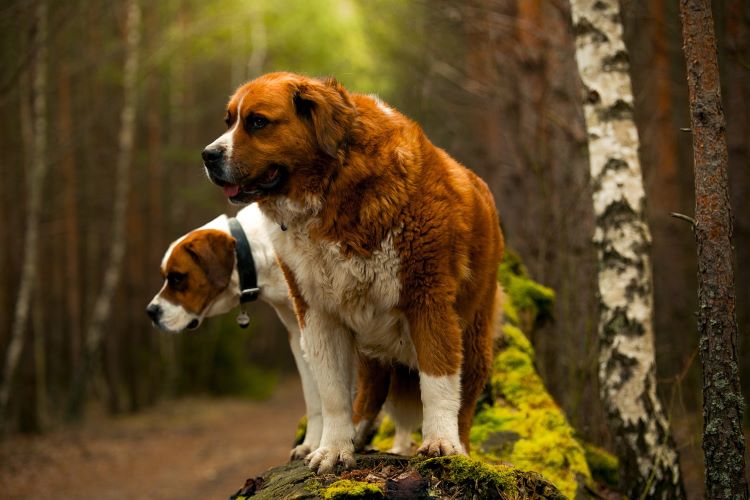
Choosing a family dog is no easy task. Some families prefer high-energy breeds, while others prefer the company of a cozy lap dog. For still others, the choice is simple — the bigger the dog, the better! Many large dog breeds come with big, loving personalities, making them great companions. Some are impressive, some are goofy, and others are protective. In other words, not all big dogs are the same.
If you’re not at all sure which size canine is right for you, taking this quiz can help. But to consider having a large dog breed in the family at all, it’s important to know that they have specific care needs. Here’s a rundown of some of the biggest dog breeds in existence and what makes them unique.
Caring for a big dog
Before you decide to welcome a large canine into the family, it’s essential to realize that big dogs come with certain considerations:
- Bigger space needs — Naturally, a larger pet takes up more space and requires greater areas to stretch out in and get sufficient exercise than smaller animals.
- Slower maturation — Big dog breeds are considered “puppies” for longer periods of time than smaller canines as it takes more time for them to reach maturity (mentally as well as physically).
- Dedicated training — All dogs need training, but it’s especially important with large canines who can cause harm if not properly socialized and taught to follow commands.
- Higher cost — It should come as no surprise that big dogs eat a lot! Some pet owners who get a large breed after only having smaller pups find themselves shocked by how much faster they go through food. This, combined with toys and other pet gear specific to big dogs, makes for higher cost.
Regardless of the breed or mix you choose, big dogs equal big commitment. And no matter which lovable dog you gravitate to, you won’t be able to predict exactly what illnesses or injuries may come their way. That’s why you’ll want to add dog medical insurance to your list of supplies for such a pet.
Top 10 largest dog breeds
The more the dog, the more there is to love. Check out these adorable fur monsters, starting with the biggest (on average) ones first.
1. English Mastiff
Weight average: 77.1 – 106.7 kg
Height average: 69.9 – 76.2 cm
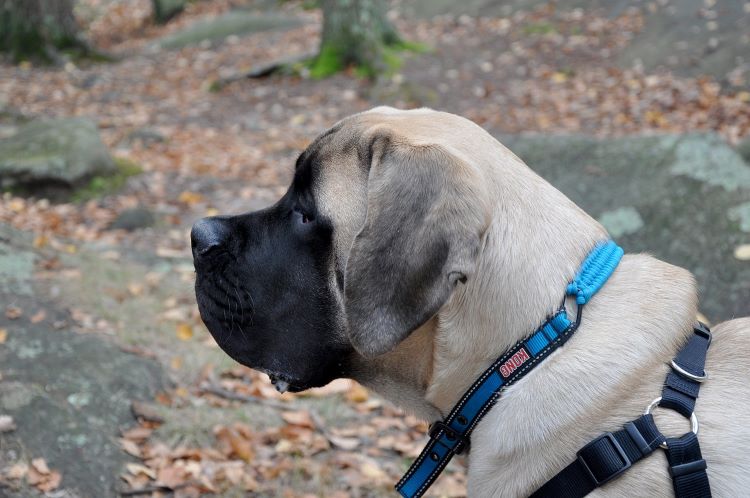
The English Mastiff is one of the oldest dog breeds still in existence today, and it is also among the largest. When looking at both global individual records and breed averages, the English Mastiff could be considered the biggest dog breed around. Known for their thick, sturdy builds, lovable droopy faces, and often wrinkled coats, these dogs tend to not reach full maturity until about five years of age.
Consider working with a dog trainer if you’re new to the Mastiff breed. Their large builds and hearty appetites mandate a lot of exercise, but over-exerting an English Mastiff can lead to serious injuries. Their foreboding appearances can also be intimidating to new people and other pets, but a well-trained pup will help ensure the safety of humans and animals alike.
*Fun fact* The longest and heaviest dog ever recorded was an English Mastiff named Zorba, who clocked in at an impressive 343 pounds (155.6 kg) and a nose to tail length of 8ft 3 in (2.544 m). He claimed the Guinness World Record for this accomplishment in 1987 and has not been beaten as of 2023.
2. Boerboel
Weight average: 68 – 90.71 kg
Height average: 60.96 – 68.58 cm
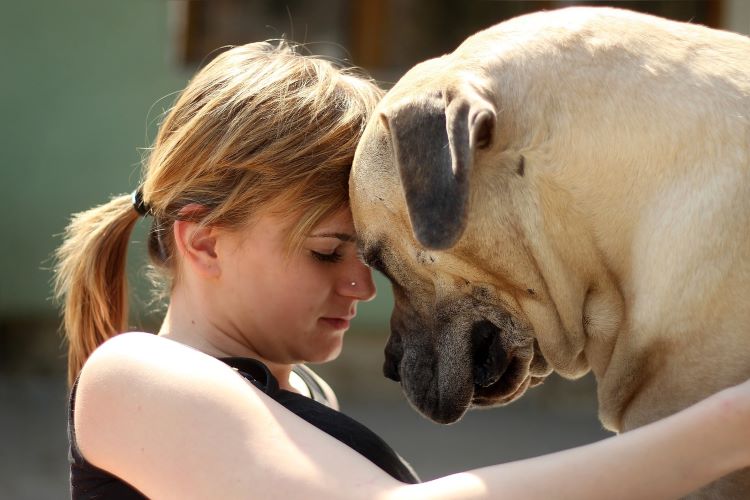
The name Boerboel comes from the Afrikaans words “boer” (farmer) and “boel,” which is a shortened from “boelhond” (bulldog). However, these calm, highly intelligent canines are not bulldogs but a type of Mastiff. In addition to being large in stature, they are noted for their broad, blocky heads and distinguishable muscles.
Many pet owners describe Boerboels (pronounced Bor-Bulls) as confident and eager to learn. With proper training from early ages, they can make great family dogs who are protective of both their territory and the humans within it.
3. Tosa Inu
Weight average: 36 – 90 kg
Height average: 54.61 – 59.69 cm
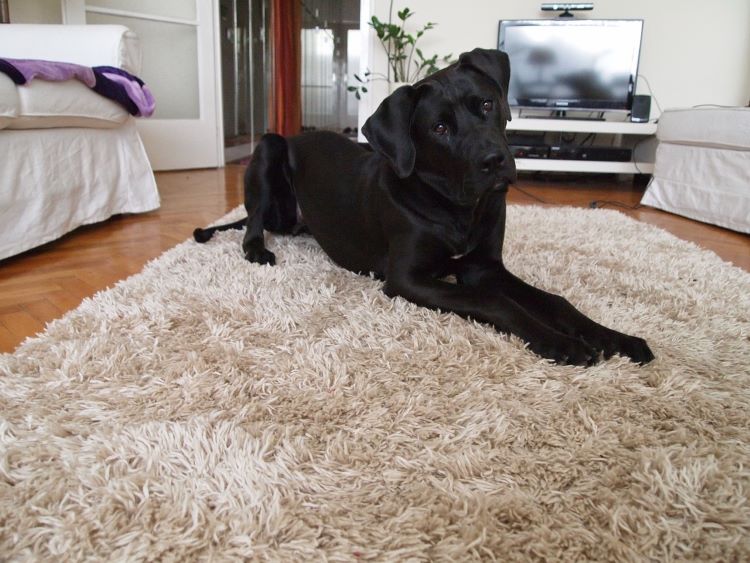
A rarer breed, the Tosa Inu originates from Japan and is the largest of all Japanese dog breeds. This strong, short-haired canine was initially bred as a fighting dog and has been referred to as the “Sumo wrestler of the dog world” and is celebrated due to its large size. That said, sizes of Tosa Inus (often just called “Tosas”) can vary wildly. According to The Smart Canine, Tosas that are bred outside of Japan tend to be bigger and heavier than those bred within their origin country.
Well socialized and obedient Tosa make excellent companion dogs and guardians. Improperly trained Tosa Inus can be aggressive and dangerous to humans, and ownership is restricted in some countries as a result. It’s important to check with local laws before you decide to get one, and consider working with an experienced trainer to ensure you’re taking the right steps.
4. Saint Bernard
Weight average: 72.5 – 85.72 kg
Height average: 70 – 90 cm
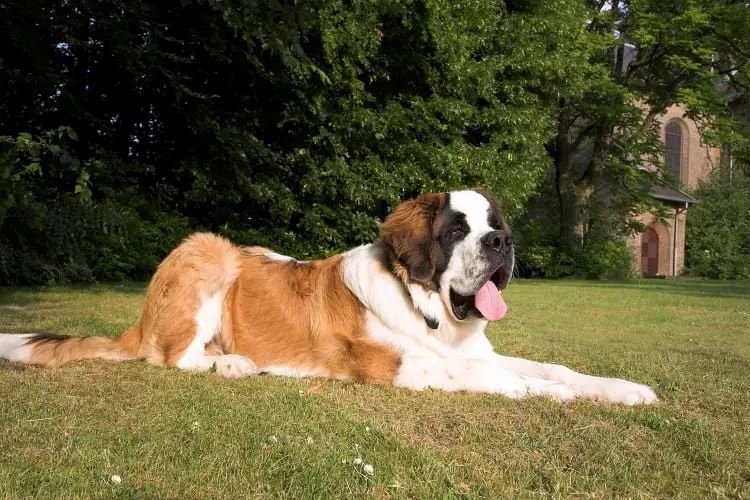
This famously large working dog breed hails from the western Alps on the Italian-Swiss border, where it was developed in the 1600s for rescue work in tough weather conditions (specifically avalanches) and difficult terrain. Today, the breed is beloved by people around the world for not just its stature, but its gentle temperament and caring nature.
Despite their search-and-rescue ability, Saint Bernards have relatively moderate exercise needs compared to breeds with more energy and agility. Over-exercising Saint Bernards can result in injury, but on the flip side, under-exercising them can quickly lead to obesity. Always consult with your pet’s veterinarian to make sure you’re meeting your pet’s daily requirements and keeping them on a healthy path.
*Fun fact*Mochi, a Saint Bernard who made hundreds of appearances in nursing homes, at schools, and on TV, held the Guinness World Record for the longest tongue on a living dog until she passed away in 2021. Her tongue measure 7.3 in (18.58 cm), and she held the record for five years.
5. Great Dane
Weight average: 49.89 – 79.37 kg
Height average: 71.12 – 81.28 cm
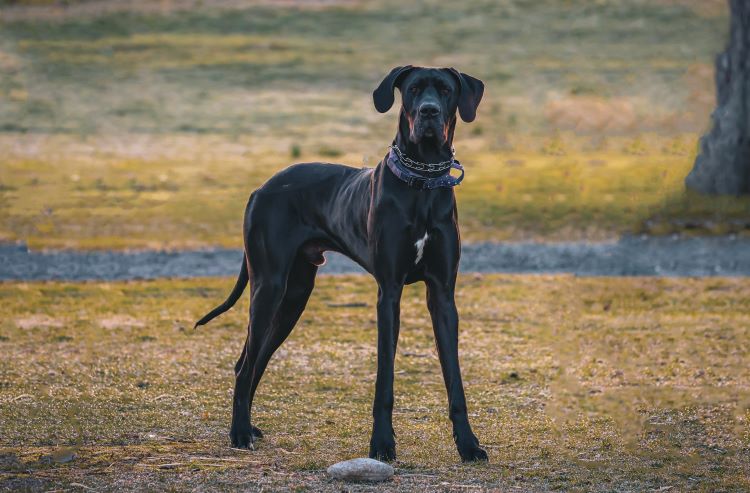
Often referred to as gentle giants, Great Danes are as renowned for their elegant appearance and calm nature as they are for their huge size. But what many pet owners are pleased to find is that beneath all the Great Dane’s majestic is a fun-loving dog who loves goofy playtime. Having plenty of space to romp around in is a must for these pets, as is snuggle room — Great Danes are also known for their affection and ignorance of the fact that they’re a bit too large to be lap dogs.
Like many other large dog breeds, Great Danes are at risk of certain health conditions (like Cardiomyopathy). Keep up with routine veterinary visits and ask questions about your dog’s care.
6. Leonberger
Weight average: 40.8 – 77.11 kg
Height average: 68.58 – 78.74 cm
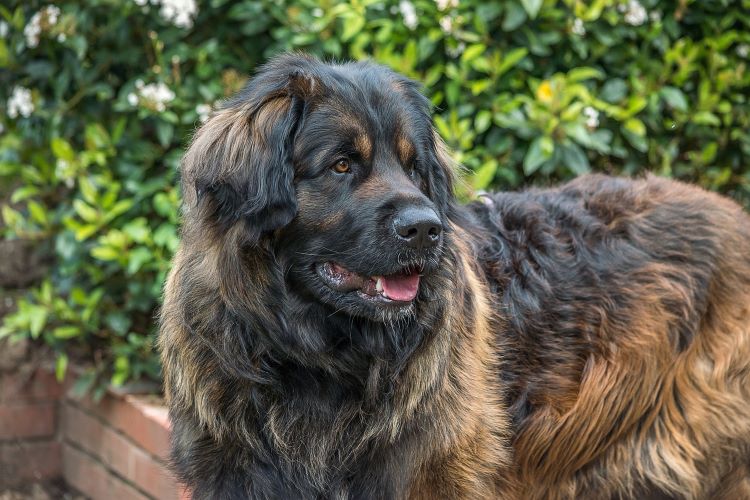
The Leonberger is a big dog of German origin known for its lush double coat and muscular strength. Though they are believed to have been bred primarily for companionship (a rarity among big dogs), Leonbergers are capable companions in a wide variety of settings and services. Not only do they have a history of popularity among royalty across Europe, but these dogs have also served as helpful, patient working dogs. In the early 20th Century, Canada imported Leonbergers to use them as lifesaving dogs on the country’s waterways.
Leonbergers require thorough grooming, which means regular bathing and brushing at least every few weeks to remove dirt and other harmful materials from their coats. Be prepared for heavy shedding about twice a year.
7. Neapolitan Mastiff
Weight average: 50 – 70 kg
Height average: 61 – 74 cm
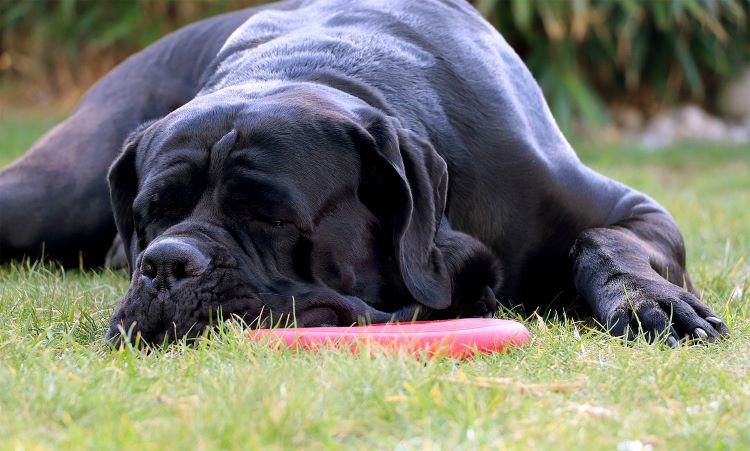
Also known as the Italian Mastiff, the Neapolitan Mastiff is descended from guard dogs in central Italy and is closely related to the more athletic Cane Corso. A large, wrinkled breed with a short coat, this dog looks beastly but has a calm, quiet demeanor.
Though puppies of these breed tend to start out very friendly and trusting, they can become more reserved and wary as they mature. With proper socialization, however, these dogs learn to address other pets and humans appropriately. That said, Italian Mastiffs can become strongly attached to their humans and require frequent personal attention and engagement. They also need moderate exercise or risk becoming overweight or even obese.
8. Newfoundland
Weight average: 45.3 – 68.04 kg
Height average: 66.04 – 71.12 cm
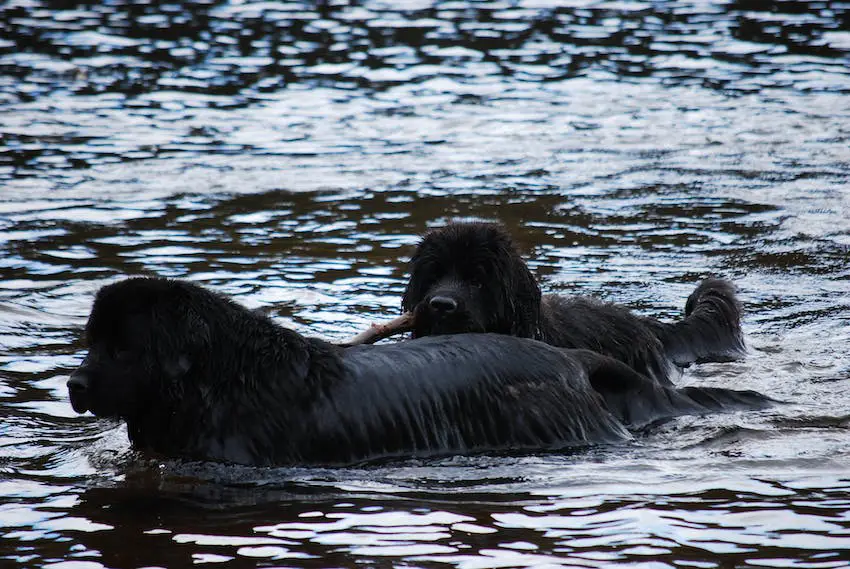
Thick fur, sweet temperaments, large size — these are the traits Newfoundlands are perhaps best known for. But in addition to looking like huggable bears walking around the home, “Newfies” are strong and intelligent working dogs. Bred to work alongside fisherman in Newfoundland (before the region officially became part of Canada), these dogs have a history of excelling at water rescues.
Of course, most modern Newfoundlands are family pets rather than active working dogs. Their webbed paws and water-resistant coats still makes them ideal for water activities though, so try playing fetch by a body of water or take your Newfie swimming when able.
9. Anatolian Shepherd
Weight average: 36.2 – 68.04 kg
Height average: 73.66 – 81.28 cm
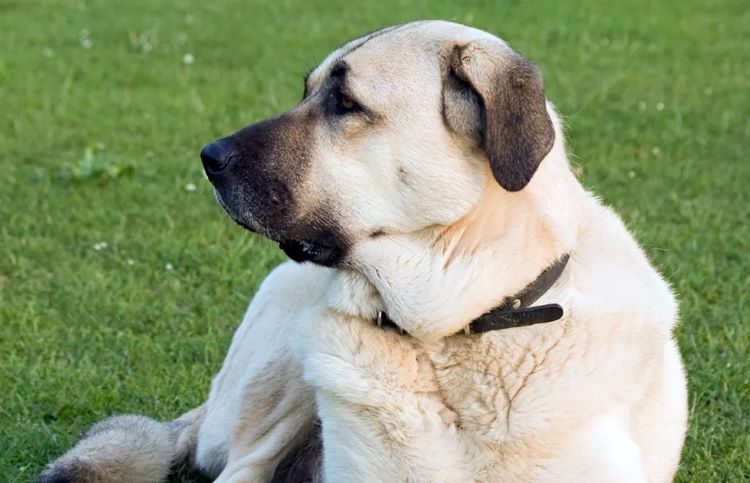
The Anatolian Shepherd Dog, often referred to as the Anatolian or just “ASD,” is a remarkable large dog breed known for its unwavering dedication to guarding and protecting livestock. Originating in Turkey, these majestic canines have a rich history that dates back thousands of years. With a sturdy build and a strong, muscular frame, the Anatolian has a formidable presence at a glance. Their distinctive, thick double coat helps them endure extreme weather conditions, making them well-suited for their traditional role as livestock guardians.
While Anatolian Shepherds have strong working and protective instincts, they can also make loving and loyal companions for the right owner. They form strong bonds with their families and are generally good with children and other pets when properly socialized. Starting this early is essential to ensuring they develop into well-behaved, well-adjusted pets.
*Fun Fact* Anatolian Shepherds are commonly known to have made it into the US by the 1950s, but it is believed that they came over earlier as part of a secret government project in the 1930s. The alleged project? To determine the world's greatest sheepdog.
10. Tibetan Mastiff
Weight average: 31.75 – 65.77 kg
Height average: 66.04 – 73.66 cm
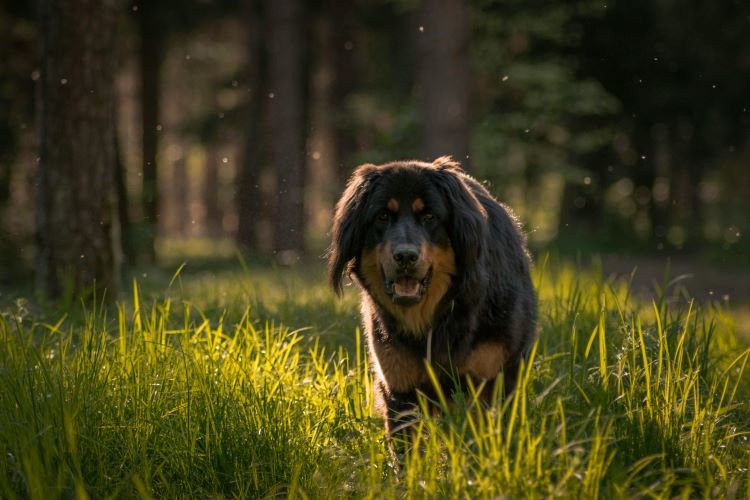
As its name suggests, the Tibetan Mastiff breed originated in the region of Tibet, where it was favored by nomadic groups to guard livestock and homesteads from predators like wolves, bears, and even the occasional leopard. The dogs also have a long history as guardians of Buddhist monasteries in the Himalayas. Tibetan Mastiffs are fittingly one of the largest and most muscular of all dog breeds, complete with a thick double coat that provides insulation in harsh climates. Adding to their burly-yet-handsome appearance is a mane-like ruff around the neck and a distinctive, curled tail.
Despite the Tibetan Mastiff’s imposing size, these dogs are known for their loyalty and affection toward humans, making them excellent cohorts for families and individuals alike. As with other dog breeds from similar backgrounds, they require early socialization and training along with plenty of space to roam and exercise. They also require regular grooming to avoid fur matting and tangles.
Which big dog breed is right for you?
Many big dogs make wonderful family companions. Once you’ve decided that a big dog is for you, consider your family’s lifestyle, needs, and expectations before settling on a particular breed. No matter which loveable dog you choose, be sure to protect their health.
Don’t worry, cat lovers. We’ve got you covered too with this list of the largest pet cat breeds.
